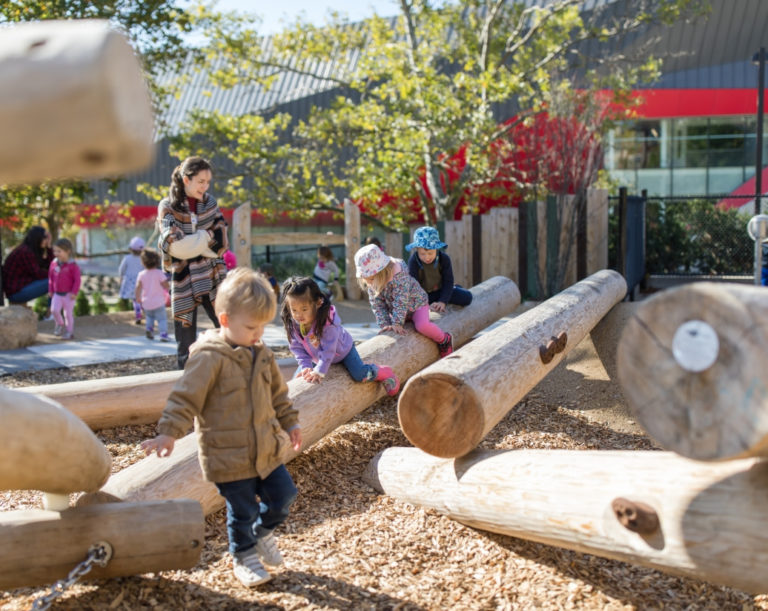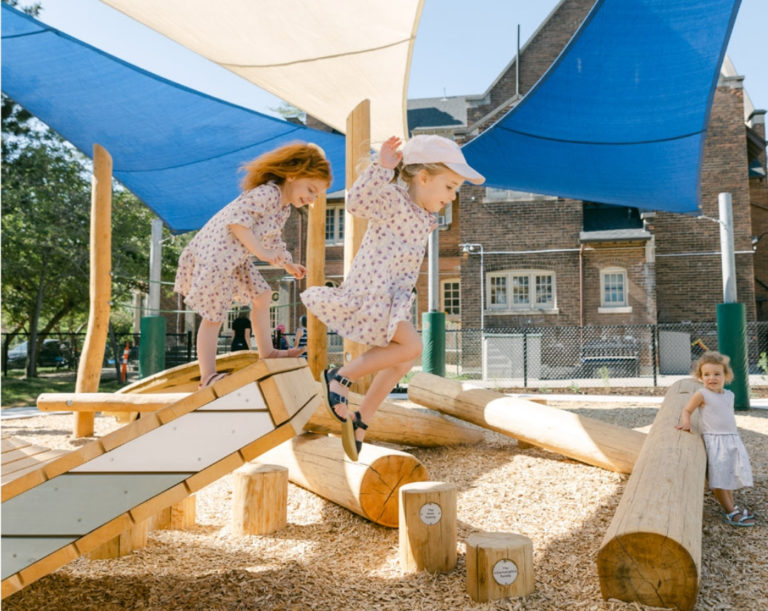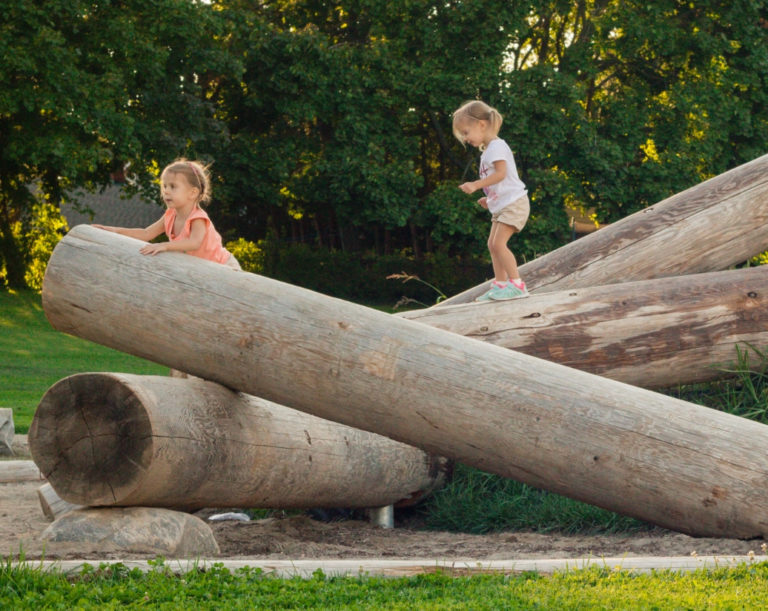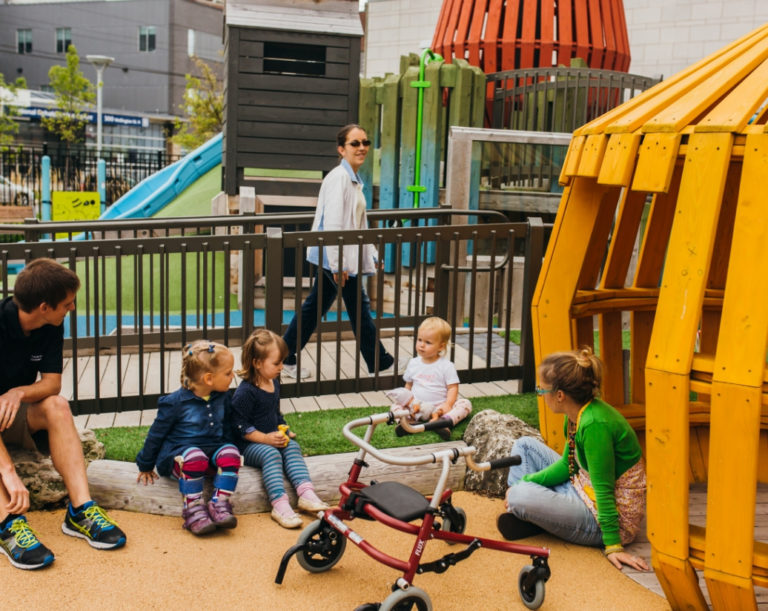Play[grounds]
For Early Years
The thoughtful design of a childcare centre playground can have a tremendous impact on the physical, emotional, social, and cognitive development of children and the experience of childcare staff.
Earthscape’s approach to designing playgrounds for childcare centres recognizes that every child plays in a unique way. At different developmental stages, even on different days, the needs and interests of children vary.
Our childcare playgrounds cater to diverse play styles—for the adventurous climbers, exploratory diggers, careful observers, and constant risk-takers alike, ensuring every child finds joy, growth, and endless possibilities in play.
Why do childcare centres choose Earthscape?
The lifespan of your existing playground is coming to an end
Current playground is barren and hot
Children and staff deserve a better outdoor space
Durable, long-lasting, natural playground
Align outdoor environment with pedagogical approach of your childcare centre
Climate-resilient landscape and environmental stewardship
All-weather, four seasons play and event space
Environment to encourage cooperation and positive social behaviours
Develop gross and fine motor skills
Earthscape has an exceptional reputation for building award-winning childcare playspaces. As a highly experienced landscape design-build firm, we strive to create the best outdoor play and learning environments where children can explore and take appropriate, measured risks to advance their social, emotional, cognitive, and physical development.
Four primary considerations are given to each of our childcare playground projects:
Site & Space
Effective childcare playgrounds maximize space and consider site conditions, constraints, and opportunities for play. They accommodate different play zones and meet age-specific design needs for infants, toddlers, and preschoolers. Play structures are functionally linked in an exciting and comprehensive way making use of connecting pathways and topographical changes.
- Consider the division of space and flow and circulation patterns.
- Integrate a variety of organic and inorganic materials.
- Shade, shade, shade!
- Flexible space for educators to add their own programming and special events.
Unlimited Play & Risk
For children to develop mobility, strength, balance, and coordination, they need opportunities that enable free movement and graduated challenges. Undefined and open-ended play spaces allow children to take risks, learn to assess their own abilities and develop judgement skills.
- Children must feel challenged; experiencing both failure and success to gain confidence in their own decision-making skills.
- Variation affords the opportunity for children to learn critical skills of movement in an irregular environment.
- Graduated challenge options encourage children with different capabilities to play together.
- A range of play affordances allow children to decide what feels risky to them.
Environmental Connection
The experience of nature has so many documented lifelong benefits: improved physical and mental health, educational opportunities, community connections, and environmental awareness. When connections are made in the early years, they last a lifetime! Sustainable playgrounds use long-lasting, natural materials that develop environmental stewardship from a young age.
- Only select species of wood are used, providing flexibility in the design.
- Wood is a natural and renewable material.
- A variety of organic elements and materials are designed to be playable so children can experience cause and effect.
- Natural materials offer a multi-sensory play experience, enriching the imagination and stimulating curiosity.
- Wood is a poor conductor of heat so play pieces feel warm to the touch on a cold day and cool to the touch on a hot day.
Diverse & Cooperative Play
Inclusive playgrounds afford opportunities for all types of play: constructive, physical, dramatic, and social. Sand play, balancing logs, play huts, play kitchens, benches, and climbers all nurture cooperative and social play where children interact, encourage, and teach each other. With diverse play options, caregivers spend more time engaging with children and less time dealing with conflict.
- Truly inclusive playgrounds enable, encourage, and empower kids of all abilities and ages to connect.
- Childcare playgrounds must include spaces of solitude and perceived privacy; spaces of calm and separation.
- Nooks, berms, huts, seating, and shaded spaces must be sited for supervision by educators.






